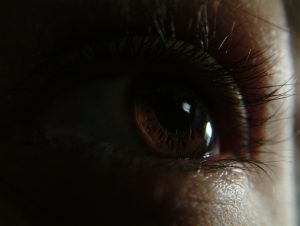Charlotte Personal Injury Attorney Matt Arnold answers the question: “What can you sue for in a personal injury case?”
There’s a lot of work that goes into preparing a personal injury case for trial. In addition to gathering evidence, talking to witnesses, analyzing medical records and constructing a theory for your case, the lawyer in charge will also need to think through the best way to relay the harm suffered to the judge or jury tasked with awarding damages. All the evidence in the world is of little use if the person deciding your case isn’t able to fully appreciate the extent of the harm suffered. This gap between the pain of the plaintiff and the judge or jury’s ability to understand has long proved problematic in personal injury cases and can make it difficult to secure awards that appropriately value the injuries that occurred.
 One way that personal injury attorneys have sought to solve the problem is to bring in expert witnesses. These experts can take complicated medical records or confusing technical facts and explain them to fact finders in a way that is easier to understand. The problem with experts, though, is that they are typically not emotionally invested in the case given that they are outside observers. Lawyers can compensate by having the victim or the victim’s family members testify, an attempt to put a personal face on the harm that was suffered.
One way that personal injury attorneys have sought to solve the problem is to bring in expert witnesses. These experts can take complicated medical records or confusing technical facts and explain them to fact finders in a way that is easier to understand. The problem with experts, though, is that they are typically not emotionally invested in the case given that they are outside observers. Lawyers can compensate by having the victim or the victim’s family members testify, an attempt to put a personal face on the harm that was suffered.
Though these go a long way in bridging the gap between plaintiff and fact finder, there can still be things that are lost along the way. A law professor from Quinnipiac University recently wrote a book discussing another technique, known as sensory testimony, that might prove useful in putting the fact finder in the shoes of the plaintiff. The professor, Neal Feigenson, says that words alone are often not enough to convey the richness of an event. A description, even a detailed and evocative one, is no substitute for experiencing the event yourself.
According to the professor, some creative attorneys are taking steps to solve this problem. In one example, a man suffered from a bad case of tinnitus (ringing in the ears) that was caused when a wheel on his car exploded in his face. At trial his lawyer tried to recreate the exact noise the plaintiff was hearing and a sample was played to jurors through headphones that they were allowed to listen to for as long as they wanted. The jury eventually came back with a $1.2 million verdict, one of the largest ever seen in the area.
Experts say this kind of sensory testimony can prove incredibly effective. It easily does something lawyers are constantly attempting to do: to get the jury to sympathize with the victim by putting them in the victim’s shoes. Though it’s been shown to be effective, it’s not widely used. One reason is that it can be expensive to put together such elaborate displays. Another is that judges have been skeptical about allowing the introduction of a new and potentially controversial form of evidence. Finally, too few people are aware that such a possibility exists, though, if cases like these continue to secure such big victories it will only be a matter of time before others catch on.
If you or someone close to you has been injured, contact an experienced personal injury attorney today who can help you receive the compensation to which you may be entitled. Contact Arnold & Smith, PLLC for a free consultation, call at 704-370-2828 or click here for additional resources.
About the Author
 Matthew Arnold is a Managing Member of Arnold & Smith, PLLC, where he focuses on the areas of family law, divorce, child custody, child support, alimony and equitable distribution.
Matthew Arnold is a Managing Member of Arnold & Smith, PLLC, where he focuses on the areas of family law, divorce, child custody, child support, alimony and equitable distribution.
Mr. Arnold was raised in Charlotte, where he graduated from Providence Senior High School. He attended Belmont Abbey College, where he graduated cum laude, before attending law school at the University of North Carolina at Chapel Hill on a full academic scholarship.
A board-certified specialist in the practice of Family Law, Mr. Arnold is admitted to practice in all state courts in North Carolina, in the United States Federal Court for the Western District of North Carolina, in the North Carolina Court of Appeals and Supreme Court, and in the Fourth Circuit United States Court of Appeals in Richmond, Virginia.
In his free time, Mr. Arnold enjoys golfing and spending time with his wife and three children.
Image Credit:
http://www.freeimages.com/photo/eye-texture-1491358
See Our Related Video from our YouTube channel:
https://www.youtube.com/user/ArnoldSmithPLLC/videos
See Our Related Blog Posts:
 Charlotte Injury Lawyers Blog
Charlotte Injury Lawyers Blog

